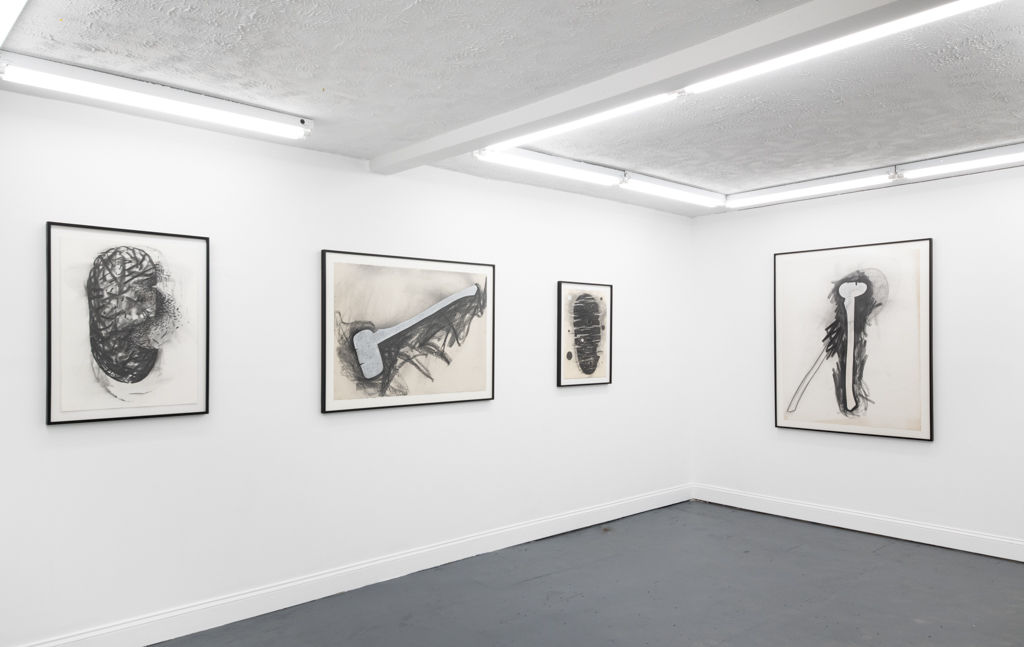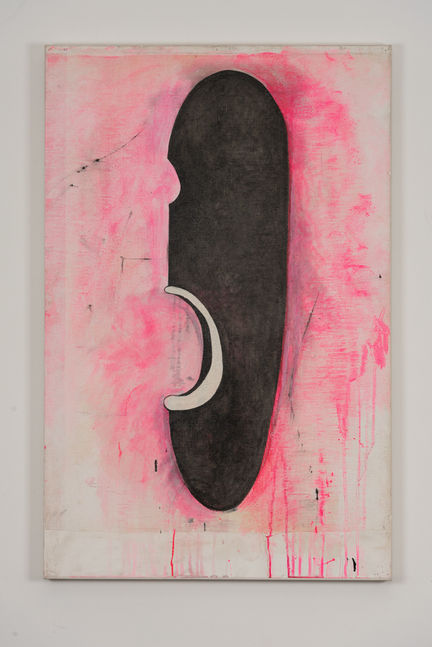
A LIE NOT A WISH
11 September - 9 October, 2021
SELECTED WORKS
INSTALLATION VIEWS
CURATORIAL STATEMENT
Connect:
@catalystcontemporary
@william_s._dutterer
Catalyst Contemporary presents A Lie Not a Wish, a solo exhibition featuring the work of William S. Dutterer (1943 - 2007). Opening on the 20th anniversary of 9/11, the works on display showcase Dutterer’s ability to dig down into the uncomfortable root of self-examination of both himself and others. Dutterer examines this exploration for us by utilizing dichotomies and humor in unexpected ways resulting in a cathartic conclusion. In light of recent events in Afghanistan, the exhibition summons questions about our own roles within intricately woven global systems and how we can not only process current affairs but also potentially affect change.
“The First Casualty of War is the Truth”, a statement drawn from Hiram Johnson at the onset of World War I, is painted beneath the abstraction of a pale silhouetted head: its mouth wrapped in white bandages, silenced. The works in the gallery’s main room are painted heads in various states of restraint, or self-isolation - some silent, others screaming and set against abstracted, textural backgrounds. Figures which are not bound by wrappings still are frozen in time and space and give a similar feeling of being imprisoned, covered, and masked - their identity unknown, their gaping mouths still silenced. The silent screams in Dutterer’s work convey his own experiences and constant contention with both bearing witness to the systems we exist in and the feeling of incompetence at being able to make an effective change on our historic and monolith social and political structures.
The show highlights three bodies of work by Dutterer completed over a span of a few decades. During this time, Dutterer moved away from his most well-known works - minimalistic paintings and mixed-media work - and shifted into discovering and expressing his own personal and wider political voices. Dutterer kept his minimal-scapes - these backgrounds are rich in texture but containing no actual place - and inserted his narratives and subjects within an almost divine realm that simultaneously embrace and reject his figures. This tension creates a sense of an overwhelming abyss that exists just beyond our comprehension - as if we are looking into a realm not made for our eyes. And yet, these works are Dutterer making sense of his current moment - a mindscape that usually walks a thin line between humor and tragedy. Here the humor, though still present, is less at the forefront, and instead, we are confronted with a myriad of oppression and restraint.
The works in the Back Room, works on paper, continue the motif of heads but introduces a new more utilitarian form into Dutterer’s lexicon - one which points out its meaning and intention even more explicitly - the silhouetted axes and hammers. With titles such as “Hammer from Hell,” “Chopping Block,” and “Sept. 11, 2001” these larger-scaled drawings summon images and connections to current and past systems of imperialism through the use of the military and force. A dark and wispy aura seeps out from these tools surrounding them and creating an ominous and threatening tone. More poignantly, the work is saturated with America’s role, history, and the careful crafting of its own ideology to continue and expand its current systems of dominance and oppression both at home and worldwide.
Even within the face of such limitation and the frustration of feeling like a bystander, Dutterer employed humor and wit that add complexities to these issues. Instead of succumbing to anger and despair, Dutterer offers us a way to process our own emotions without being completely consumed by them. One such piece is the Long Goodbye. Created after a trip in 2004 to Kabul, Afghanistan the two blindfolded heads kiss on a textured ocher background that was meant to duplicate the city at sunset. Even in the face of shock and sorrow experienced back home, Dutterer highlights and elevates love and hope within the throes of war cries.
The works in both galleries of Catalyst come together and present a collective consciousness and history of America, both the actual history of it and our attempts to cover and silence it in order to craft a more comfortable mythology. The title of the exhibition, A Lie Not a Wish, refers to Dutterer’s determination to examine, dissect, and confront these mythologies and our roles and confinement within them to further examine and challenge these wishful fictions that are trying to replace the truth.
The exhibition is made possible by the William S. Dutterer Trust.














































